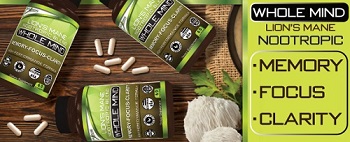How Natural and Red Light Therapies Offer Hope for Macular Degeneration
Age-related macular degeneration (AMD) remains one of the most common causes of vision loss in older adults, gradually stealing the ability to read, recognize faces, and enjoy the details of the world.
Affecting nearly 300 million people by 2040 if trends continue, AMD appears in two primary forms—dry and wet. Dry AMD progresses slowly as the retinal pigment epithelium and macular photoreceptors break down. Wet AMD advances quickly due to abnormal blood vessel growth under the retina, leading to leakage, bleeding, and rapid vision loss.
While conventional treatments—particularly for wet AMD—are powerful tools, new approaches are expanding the possibilities for preserving sight. Among these, red light therapy is drawing attention as a non-invasive option for early dry AMD, while nutrition, hormone balance, and antioxidant-rich plant compounds are gaining ground as complementary strategies.
Red Light Therapy and Cellular Energy

Red light therapy, or photobiomodulation, uses specific wavelengths of red to near-infrared light—around 670 nanometers—to stimulate the mitochondria in retinal cells. By boosting cellular energy production, reducing inflammation, and protecting delicate retinal structures, it aims to slow degeneration rather than reverse it.
Clinical studies have shown modest benefits, including small gains in visual acuity, improved color and contrast sensitivity, and slowed progression of geographic atrophy in dry AMD. These improvements often last about six months, making repeated treatments necessary. Devices like the FDA-cleared Valeda Light Delivery System represent regulated ways to bring this technology into clinical practice.
For now, red light therapy is best suited for early to intermediate dry AMD, offering a non-invasive option to preserve vision and quality of life. While not a cure, it pairs well with other preventive and nutritional strategies.
Anti-VEGF: The Standard for Wet AMD
Wet AMD is currently best managed through anti-VEGF injections—drugs that block vascular endothelial growth factor, the molecule responsible for unwanted blood vessel growth in the retina. These injections can halt or even reverse vision loss, often restoring function in daily tasks. While highly effective, they require regular administration and do not address dry AMD.
The contrast between these two therapies—red light for early dry AMD and anti-VEGF for wet AMD—underscores the need for accurate diagnosis and tailored treatment.
Hormone Balance and Eye Health
Emerging research shows that the hormone DHEA is abnormally low in many AMD patients. DHEA and other sex hormones appear to help protect the macula from oxidative damage. One theory suggests that low hormone levels may cause the macula to accumulate cholesterol in an attempt to produce its own hormones, potentially leading to drusen formation and disease progression.
Bioidentical hormone restoration may offer protective benefits for both men and women, with studies linking hormone replacement therapy to lower rates of neovascular AMD in certain populations.
Melatonin, another hormone and powerful antioxidant, has shown promise in clinical trials, halting further vision loss in patients with both dry and wet AMD when taken in low nightly doses.
Nutritional Defenses: Carotenoids and Omega-3s
The macula is protected by a pigment layer composed primarily of lutein, zeaxanthin, and meso-zeaxanthin. These carotenoids filter harmful light and neutralize free radicals. Diets rich in dark leafy greens, brightly colored fruits, and certain supplements can help maintain pigment density, which is strongly linked to lower AMD risk.
Omega-3 fatty acids from oily fish and flaxseed have also been shown to protect against AMD, with regular fish consumption reducing the risk of both early and late disease. These healthy fats support retinal cell membranes and reduce inflammation.
Powerful Plant Compounds: Bilberry, Grape Seed, and Saffron
Bilberry’s anthocyanidins and cyanidin-3-glucoside (C3G) have demonstrated benefits for night vision, vascular stability, and oxidative stress defense in the eye. Grape seed extract, rich in bioflavonoids, can protect retinal ganglion cells and inhibit abnormal blood vessel growth, potentially benefiting wet AMD.
Saffron, a spice known for its deep golden color, contains carotenoids like crocin and crocetin that improve retinal blood flow and light protection. Clinical trials have shown saffron supplementation can enhance visual acuity and retinal sensitivity, even in early stages of disease.
Additional Antioxidant Support
Other natural antioxidants also play a role. Resveratrol, found in grapes and berries, may protect retinal cells, dampen VEGF activity, and shield against oxidative damage. Ginkgo biloba supports microcirculation in the eye, while vitamins C and E, selenium, CoQ10, and R-lipoic acid all contribute to antioxidant defense.
Taurine, abundant in the retina, is essential for retinal structure, and deficiencies have been linked to degeneration. B vitamins, particularly folate, B6, and B12, may reduce AMD risk by lowering homocysteine levels—an inflammatory marker also tied to cardiovascular disease.
Evidence from the AREDS Study
The landmark Age-Related Eye Disease Study (AREDS) confirmed that a specific supplement formula—vitamins C and E, beta carotene, zinc, and copper—could reduce the risk of progression to advanced AMD in those with intermediate disease.
Later research has refined these findings, adding lutein and zeaxanthin as safer alternatives to beta carotene for certain patients.
The Integrative Approach to AMD
For many patients, the best results may come from combining approaches. Early dry AMD may be managed with red light therapy, targeted nutritional supplementation, and lifestyle changes. Wet AMD requires prompt anti-VEGF treatment to preserve vision, but antioxidants and dietary support may enhance overall eye health.
Lifestyle choices—such as avoiding smoking, managing cardiovascular health, and protecting the eyes from excessive UV and blue light exposure—are also vital in slowing disease progression.
A Vision for the Future
Macular degeneration remains a complex condition without a single cure, but advances in both conventional and natural therapies offer a brighter outlook.
Red light therapy stands out as a safe, non-invasive option for early intervention, while plant-based antioxidants, hormone balance, and targeted nutrition provide complementary protection. With ongoing research into gene therapy, stem cell transplantation, and new pharmacologic agents, the future of AMD care is steadily expanding.
By embracing a multifaceted approach—blending the precision of modern medicine with the protective power of natural therapies—patients can take an active role in defending their sight for years to come.
Source: https://www.offthegridnews.com/alternative-health/how-natural-and-red-light-therapies-offer-hope-for-macular-degeneration/
Anyone can join.
Anyone can contribute.
Anyone can become informed about their world.
"United We Stand" Click Here To Create Your Personal Citizen Journalist Account Today, Be Sure To Invite Your Friends.
Before It’s News® is a community of individuals who report on what’s going on around them, from all around the world. Anyone can join. Anyone can contribute. Anyone can become informed about their world. "United We Stand" Click Here To Create Your Personal Citizen Journalist Account Today, Be Sure To Invite Your Friends.
LION'S MANE PRODUCT
Try Our Lion’s Mane WHOLE MIND Nootropic Blend 60 Capsules
Mushrooms are having a moment. One fabulous fungus in particular, lion’s mane, may help improve memory, depression and anxiety symptoms. They are also an excellent source of nutrients that show promise as a therapy for dementia, and other neurodegenerative diseases. If you’re living with anxiety or depression, you may be curious about all the therapy options out there — including the natural ones.Our Lion’s Mane WHOLE MIND Nootropic Blend has been formulated to utilize the potency of Lion’s mane but also include the benefits of four other Highly Beneficial Mushrooms. Synergistically, they work together to Build your health through improving cognitive function and immunity regardless of your age. Our Nootropic not only improves your Cognitive Function and Activates your Immune System, but it benefits growth of Essential Gut Flora, further enhancing your Vitality.
Our Formula includes: Lion’s Mane Mushrooms which Increase Brain Power through nerve growth, lessen anxiety, reduce depression, and improve concentration. Its an excellent adaptogen, promotes sleep and improves immunity. Shiitake Mushrooms which Fight cancer cells and infectious disease, boost the immune system, promotes brain function, and serves as a source of B vitamins. Maitake Mushrooms which regulate blood sugar levels of diabetics, reduce hypertension and boosts the immune system. Reishi Mushrooms which Fight inflammation, liver disease, fatigue, tumor growth and cancer. They Improve skin disorders and soothes digestive problems, stomach ulcers and leaky gut syndrome. Chaga Mushrooms which have anti-aging effects, boost immune function, improve stamina and athletic performance, even act as a natural aphrodisiac, fighting diabetes and improving liver function. Try Our Lion’s Mane WHOLE MIND Nootropic Blend 60 Capsules Today. Be 100% Satisfied or Receive a Full Money Back Guarantee. Order Yours Today by Following This Link.






